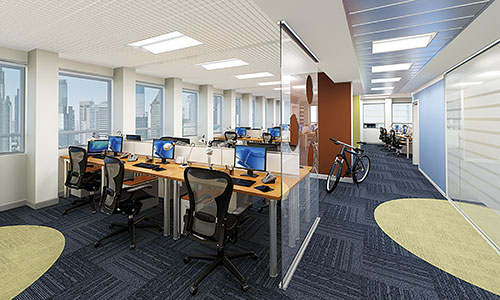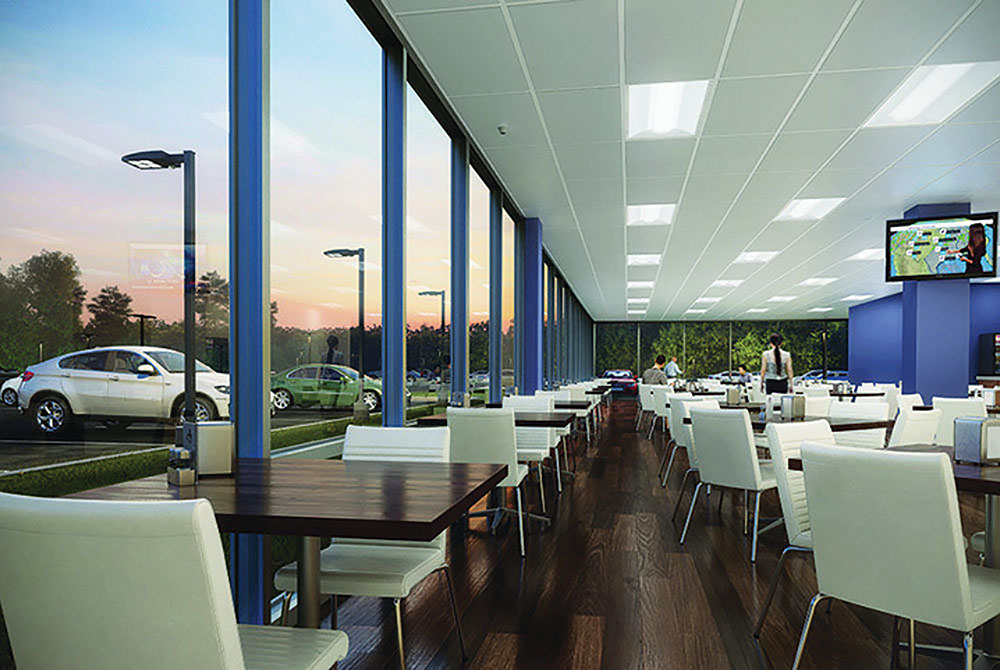Most of the lit space in the United States does not perform in compliance with the latest energy codes or take advantage of the light-emitting diode (LED), the most efficient lighting source currently available. In fact, it is estimated that less than three percent of U.S. office facilities are equipped with the lighting control systems necessary to meet current code. It is also estimated that, while adoption is on the rise, the installed base of LED luminaires represents a small percentage of the total number of lighting fixtures in existing commercial, institutional and industrial spaces. As buildings are updated with high-efficiency LED light sources, energy codes generally require that the lighting control systems also be updated to satisfy new, more efficient performance requirements.
Today’s code-compliant commercial lighting control systems can support the following:
- Required occupancy-based/vacancy control
- Automatic partial on
- Automatic partial off
- Daylight-responsive control
- Manual on/off
- Multi-level control
- Automatic receptacle control
- Schedule-based control
- Demand response.
In a traditional wired lighting control system, this level of functionality would require physical wires to carry the control signals between all of the various fixtures, sensors, wallstations, controlled receptacles and relay switchpacks. But new wireless lighting control systems allow designers and building owners to equip existing buildings with the latest code-mandated control functionality without running complex control wiring throughout the space. In a wireless lighting control system, the various components must be wired for power, but the control signals are communicated over reliable and secure wireless signals.
The use of wireless control signals dramatically simplifies the design and installation of code-compliant lighting controls in existing buildings. Consider the efforts necessary to incorporate daylight-responsive controls into every side-lit and top-lit area, as now required by code, with a traditional wired lighting control system. The fixtures must be appropriately grouped and with consideration to:
- The fixture’s proximity to the window or aperture
- Window height
- Cardinal orientation (as required by IECC 2015)
- The capacity of the daylighting controller.
Once the number and locations of the various daylighting sensors have been determined, the sensors are dropped into the ceiling, and each is wired to a daylighting controller. The daylighting controller serves as an intelligent interface between the sensor and the lighting system. It interprets the ambient light measurements captured by the daylight sensor, determines how the lighting fixtures should respond, and sends a 0-10V signal to the fixtures, causing the appropriate response. Control wires must be run from the daylight sensor to the daylighting controller, and from the daylighting controller to every fixture that belongs in that specific group.
In a wireless lighting control system, daylight-responsive functionality can be incorporated into a system with sensor-integrated luminaires. These integrated LED fixtures feature a built-in daylight and occupancy sensor. Although they offer advanced functionality, these integrated fixtures are installed in the same way that any non-integrated LED fixture is installed. The difference is that, upon installation, each sensor-integrated fixture operates as its own daylight-responsive zone. There is no need to group fixtures into code-appropriate zones, to design detailed daylighting schematics, or to pull control wires to any fixture or sensor in the space. Every fixture responds accordingly to supplement the daylight available in its area, maximizing the potential energy savings and satisfying even the most stringent energy codes.

Here’s another example of the dramatic difference achieved by updating the controllability of an existing space with wired and wireless controls. In order to meet new energy requirements, most existing spaces will need to boost the level of manual control available to offer multiple levels of light between on and off or continuous dimming. But with a wired lighting control system, the controllability of the lights is determined by the hardwired structure of the system. Physical wires will need to run from the wallstation to every fixture in the room in a way that reflects how the system should be controlled. With a wireless lighting control system, the wallstation is installed and powered with the existing wiring in the wall. The control signal is wireless, so no new wiring must be pulled to any fixture in the space, In addition, the control and configuration of the space can be easily modified without a trip back into the ceiling.
Wireless lighting control systems offer an incredible benefit to the retrofit space. The ability to update the control functionality without the need for an expansive, expensive infrastructure of new wiring saves time and money. It avoids potential miswiring issues, eliminating related delays and frustration on the jobsite. Wireless lighting control systems also offer a greater degree of flexibility than their wired counterparts. Wireless systems can be reconfigured and tweaked to meet new energy codes or new needs in the space, without adding or touching any wires.











Find Us on Socials